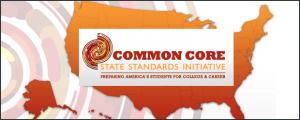The term common core standards refers to an educational initiative that provides guidelines for what students in each grade level, from K-12, should know by the end of each school year. The common core relates to the areas of mathematics and English language arts. The purpose of the common core is to ensure that standards for education are the same for all states and that students are equally prepared for college by the time they graduate from public school.
History of the Common Core
The common core was born out of the 1990s “Standards and Accountability” movement. This movement charged states with developing reports on what students in each grade level were expected to know by the end of each year, as well as assessing whether students in the state were actually meeting these standards. From this initiative, the bipartisan nonprofit Achieve, Inc. was born in 1996. However, it wasn’t until 2009 that the National Governor’s Association convened a group to write the common core standards. These have been adopted by 44 of the 50 states.
English Language Arts Standards
English Language Arts Standards under the common core are divided into five key areas: Reading, Writing, Speaking and Listening, Language, and Media and Technology. Reading standards note that students should read a variety of materials that increase in complexity and comprehensive ability each year. Writing standards measure the ability to present logical, reasoned arguments and opinions as well as develop research projects. Speaking and listening emphasizes the ability to orally express opinions as well as engage in academic discussion. Language encompasses vocabulary and grammar within the context of formal English. Media and technology focuses on new innovations in these areas as well as typing.
Mathematics Standards
Mathematics standards under the common core are divided into two areas: Standards for Mathematical Practice and Standards for Mathematical Content. Practice encompasses eight principles that students should be able to accomplish, including problem solving, abstract reasoning, constructing arguments, mathematical modeling, using tools, attention to precision, looking for and using structure, and looking for and using reasoning. Content varies by grade level, including the following four domains for elementary school: operations and algebra, numbers and operations in the context of base 10, measurement and data, and geometry. Middle school content includes the number system, equations, geometry, and statistics. High school content includes number, algebra, functioning, geometry, modeling, and statistics.
In addition to the standards themselves, assessment is key to this initiative, with formal assessment slated to take place during the 2014-15 school year. Beyond formal assessment, students in each grade level take the common core test every school year to assure that they are up to date with the standards for their grade. The official website for the common core standards provides many resources for those interested in learning more, including a comprehensive section on frequently asked questions.
Current and future teachers need to understand the common core standards to be successful in today’s education environment. While there are many continuing education classes and workshops being developed to train teachers, more education degree programs are incorporating the standards into their core education requirements. The more parents and teachers understand the common core standards and how they can be incorporated into the classroom, the easier the transition will be for the students being assessed.